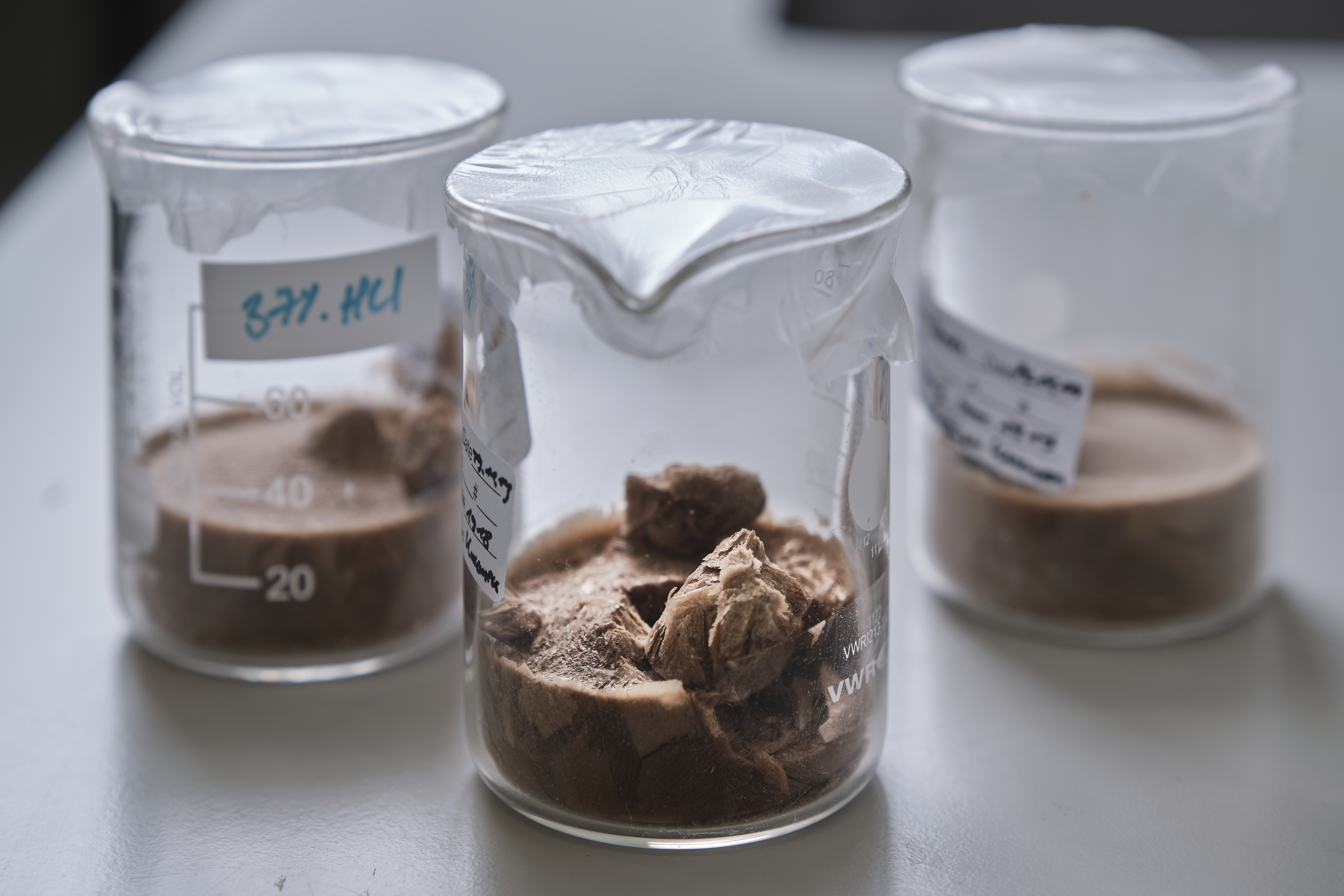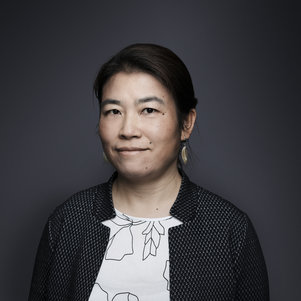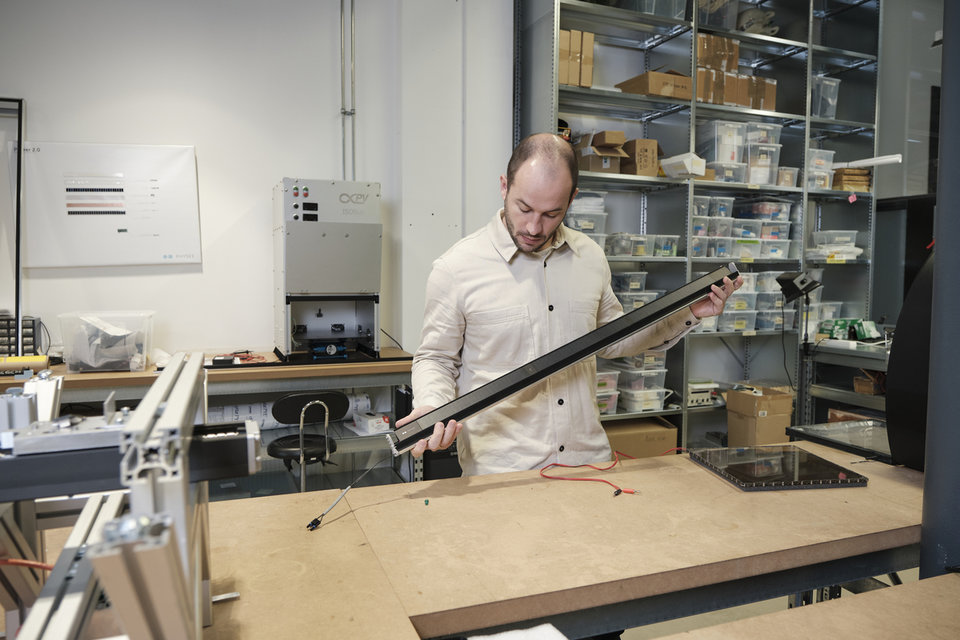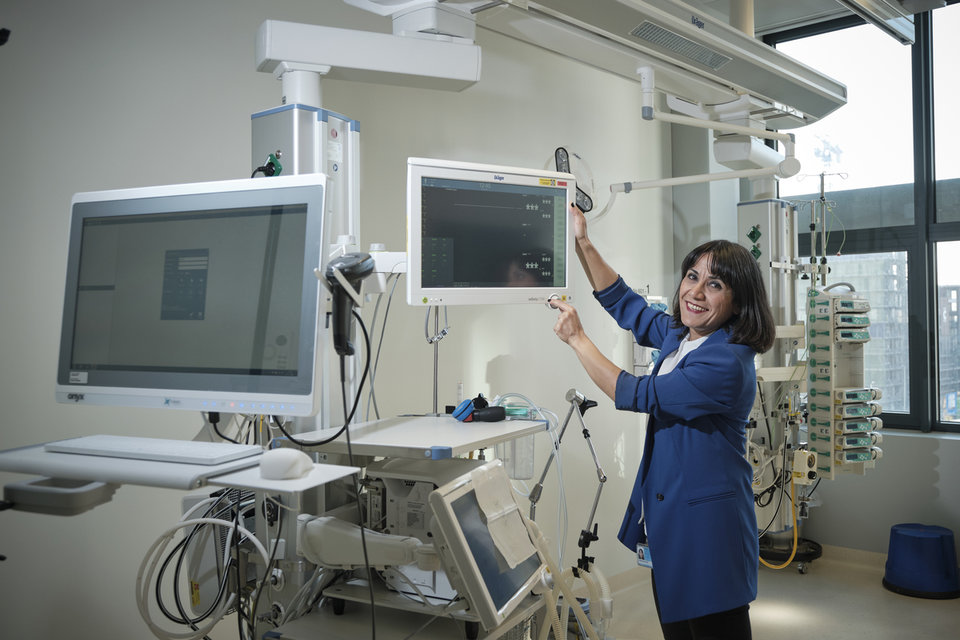Even waste materials can be turned into something valuable, as the development of Kaumera demonstrates. This material, a by-product of wastewater purification, has proved to be a useful raw material for all sorts of applications, ranging from insulation foam to jewellery. Researcher Yuemei Lin played a pivotal role in Kaumera’s success.
Kaumera was actually discovered almost by chance,” says Yuemei Lin, a researcher in the Biotechnology department of the Faculty of Applied Sciences. It derived from the development of another very successful technology which originated in Delft: Nereda.” Nereda is a sustainable purification technology for sewage water in which rather than forming floccules, the purifying, active sludge forms granules. As a result, the sludge settles much faster and more easily. The purification efficiency of the technology is very high, it takes up little space (large sludge tanks are no longer needed) and it uses relatively little energy. The discovery of Kaumera emerged from the development of the granular sludge.
Valuable raw materials
“Professor Stephen Picken of TU Delft researched it further and then we joined forces. We discovered even more positive properties of the biopolymer Kaumera which is produced in Nereda wastewater purification systems.” People and companies in the Netherlands produce millions of cubic metres of wastewater every year. This water is purified by the water boards. To them, it is not merely waste, but a valuable source of clean water, clean energy and, in the case of Kaumera, a source of valuable raw materials.
The granular sludge contains a high percentage of Kaumera. In some applications, Kaumera exhibits similarities with the biopolymer alginate, which is normally extracted from seawater. Micro-organisms produce the polymer that can be turned into materials which are not only suitable for a broad range of applications but are also cheap. For example, composite materials can be made by including other materials in the polymer matrix, such as clay, graphene, graphene oxide and other nano particles.
These bio-based polymer materials have the advantage that they are sustainable and biodegradable. They are neither poisonous nor flammable. By reproducing natural materials in this way, it is possible to produce lightweight polymer materials with very good properties, some of which are even better than current oil-based polymer materials.
Israël
Yuemei Lin’s background in is physics and she has always worked in the field of environmental engineering. “I began my research career in my home country of China where my main activity was running a granular sludge reactor for removing phosphate from wastewater. After that, I spent three years working in Israel on an electrochemistry topic. While attending a scientific conference in Vienna in 2008, I met Professor Mark van Loosdrecht from TU Delft. One of the things he talked about was Nereda, a topic that was not directly connected with my work in Israel, but was related to what I had done in China as a PhD student. I found his lecture fascinating and was immediately interested in the technology. The meeting with Van Loosdrecht eventually led to my appointment as a post-doc in Delft with a Marie Curie Fellowship.”
“After that, I took a detour into the world of scientific publishing at Elsevier. But I soon returned to research. I’ve been back in Delft since 2014, focusing on extracellular biopolymers, including Kaumera.”
Applications
Kaumera means “chameleon” in Maori, the language of the original inhabitants of New Zealand, and refers to the versatility of the material. The granular sludge produced during the Nereda treatment of wastewater contains a relatively high percentage of Kaumera. By extracting it from the purified sludge, the amount of sludge that has to be removed and incinerated is reduced by 20 to 30%. But Kaumera is also a very valuable substitute for many fossil chemicals in numerous industries, such as the paper industry, textiles, agriculture and the cement industry. Examples of the results of Yuemei Lin’s research are the development of a fire-retardant composite material and a material that has potential as insulation foam. Another material that is very like mother-of-pearl has been developed on the basis of Kaumera in combination with nanocellulose.
Kaumera reinforces and connects properties. Combining it with another raw material changes the nature of the substance. It is both a binding agent and an adhesive, but also fire-retardant. Kaumera can retain water but also repel it. This makes applications in agriculture and horticulture and in the cement industry possible. “New uses and possibilities keep appearing and research into them is well under way.” The technology was developed in a public-private partnership between TU Delft, the Dutch Foundation for Applied Water Research (STOWA), the Dutch Water Boards and Royal HaskoningDHV. The biotechnology company, Chaincraft, also joined the partnership in 2017.
Jewellery
Kaumera is not only capable of producing high performance materials: one of its very unusual aspects is that it can be made into jewellery. “This shows that even something as unattractive as flushing the toilet can lead to attractive products. I discovered that you can make earrings with Kaumera and nanocellulose and since then it has become a type of hobby. After that, the development of jewellery went really fast and was immediately accepted. It also helps to build a bridge to the general public. A lot of attention has therefore been given to the possibility of making jewellery with Kaumera, but that is naturally not the main focus of our research.”
The Netherlands will soon have two factories that produce the innovative raw material. The first factory opened in Zutphen in October last year and a second is expected to open in Epe in the spring of 2020. Yuemei Lin’s research was also a contributing factor in the TU Delft start-up Slimy Green Stuff. This company focuses on developing and applying bio-based polymers and holds patents for this too.
In the spotlight
The development of Kaumera is attracting a lot of attention, including in the media. “I think that the main reason for this is that the media truly understand that this is a very special development: making something valuable from waste. And the general public understands that too. The huge attention this technical development is receiving is definitely something I’ve had to get used to, for example at an occasion like the presentation of the Zilveren Zandloper [Silver Hourglass] in May last year.”
Zilveren Zandlopers are awarded every two years to innovative biotechnology projects in the context of innovation and education. The prize was presented to Yuemei Lin at the Dutch Biotechnology Congress. “It certainly took some time to adjust. It’s in my nature to be fairly modest and I don’t really like being in the spotlight. That modesty is partly a reflection of the culture I come from.”
“That’s why I find the open culture at Dutch universities, and actually throughout Europe, so great and so inspiring. Personal initiative is greatly appreciated and I find it very easy to establish contact with other researchers. For example, I collaborate enjoyably with research colleagues at universities in France as well as with people from Leiden, Utrecht and Nijmegen in the Netherlands.”
“You can always approach someone with a question. That’s what I did all those years ago when I met Mark van Loosdrecht at that conference in Vienna: I just went up to him and put my question to him. And see what that led to.”





